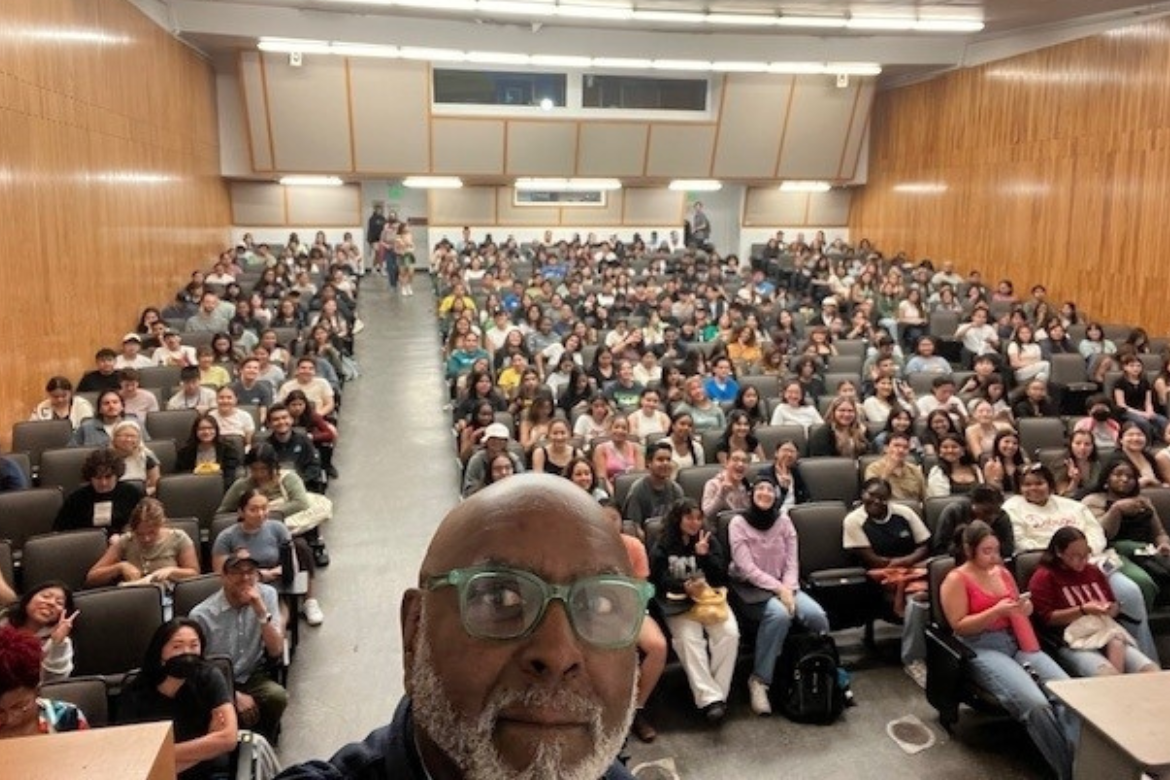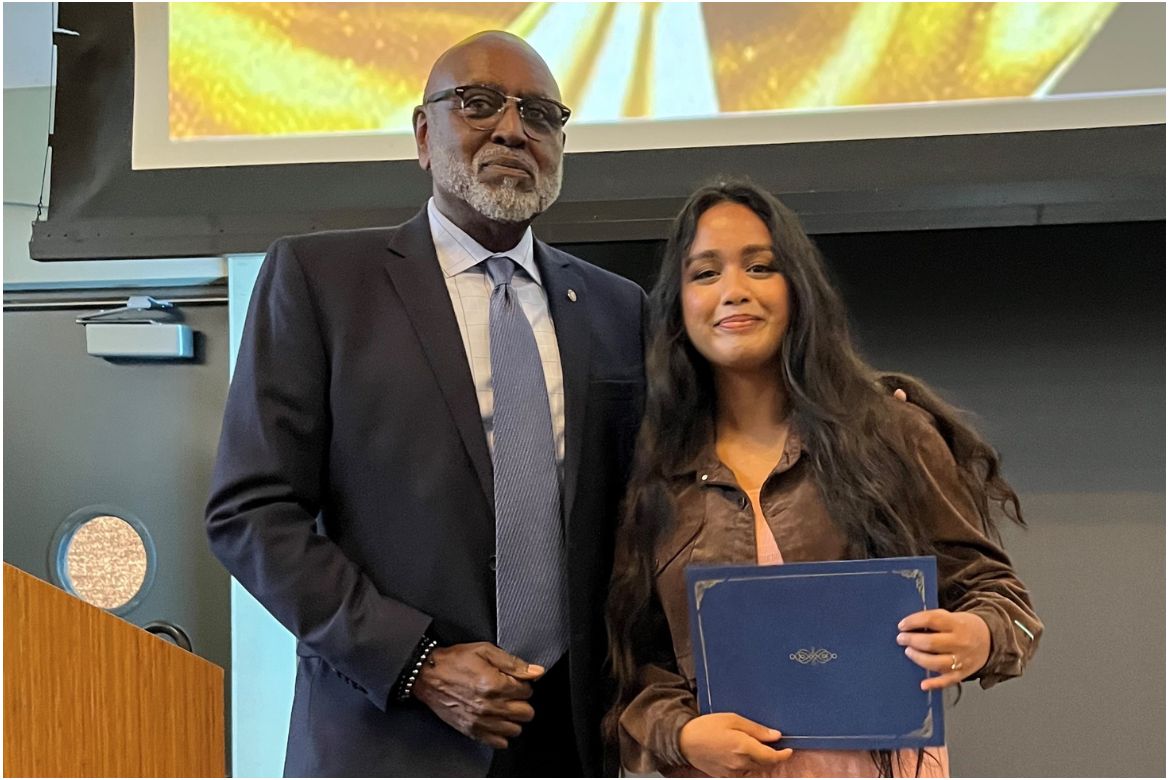Charles Alexander celebrates a legacy of helping students through their UCLA journeys
For nearly two decades, Charles Alexander — affectionately known by students as “Dr. A” — has elevated the university experience for first-generation, low-income and historically underrepresented students, allowing them to thrive throughout their UCLA journeys. Alexander, UCLA’s assistant vice provost for student diversity and director of the UCLA Academic Advancement Program, will retire at the end of June, capping off a nearly 30-year career with the University of California.
Since arriving on campus in 2006, Alexander has led AAP through a period of remarkable growth and innovation. The number of students served by the 54-year-old program nearly doubled, expanding from 3,500 to a diverse group of more than 6,300.
Among the most pivotal moments of his tenure was the launch of the “Community of Scholars” in 2008, a required orientation that connected every incoming AAP student with personalized academic resources and support networks. He also oversaw the development of the AAP Learning Pavilion in Campbell Hall in 2015, a dedicated space that added learning labs, technology-rich workstations and meeting spaces for peer learning and mentorship. “The growth of the program over the years has been quite significant,” he reflected. “We’ve become more intentional in how we serve students, and more effective in making sure every student feels seen and supported.”
As he steps into retirement, Alexander’s leaves behind a lasting legacy — one defined by equity, community and a steadfast commitment to student success at UCLA and beyond. He spoke with Newsroom about his career and hopes for AAP’s future.
Why are programs that support student retention like AAP so important?
Many of our students are the first in their family to attend college. Many are from communities that are under-resourced. To come to a big place like UCLA and not have a resource that helps you transition into college life would be somewhat of a tragedy.
Most of our students don’t have anyone in their families to offer advice or to help guide them through the college process, including the application process. Without programs like AAP, you would see attrition because students would not have a community. AAP is the academic home for many students — whether it’s peer learning, academic advising, financial aid advice or mental health resources, they can find everything they need within AAP.
The resources provided by these programs have been pivotal in helping students gain the skills, knowledge and experiences that will help them become successful students. Nearly 90% of the students who come into AAP are graduating within a six-year period.
What has been the most rewarding part of your career?

There have been so many rewarding parts of my career. I started at the University of California, San Francisco School of Dentistry in 1996, as dean of admissions. My goal was to transform the admissions process to maintain a diverse student body. That was a significant experience for me because I was given the freedom and opportunity to do that innovative work and was really able to make a difference.
One of the things that has been most pivotal for me in my time at UCLA has been giving students an opportunity to experience international education. We created exchange programs in the Netherlands for first-generation and low-income students to go overseas for the first time.
It was a transformative experience for all of them. They come back and tell you how much of a difference it made in their lives and the friendships that they developed and the connections that they made still go on to this very day.
What are some of your hopes for the future of AAP?
First, I hope that AAP doesn’t go away. We’re in a budget situation where we’re being challenged to reduce or pause some programs or activities and unfortunately have to let some staff go.
I hope that the core mission of AAP in terms of helping first-generation, low-income and students from under-resourced communities and underrepresented students continues on — particularly the peer learning and advising components.
The other is that the program continues to think about growth in terms of what else it could provide students. We have research opportunities. We’ve helped students prepare for the world of work. We’re always assessing and evaluating our programs.
AAP has been a very successful model to be around for nearly 55 years and my hope is that UCLA continues to value AAP’s work and continues to elevate the program and its recruitment of students to UCLA.
What does UCLA mean to you?
The one thing that I always observed about UCLA — even when I wasn’t working here — was that it was very diverse. It was robust in terms of its research activities and the students were exceptional. I enjoyed my time at UCSF but the one thing that drove me to UCLA was the incredible students that come to UCLA from all over the world, and who really contribute to the knowledge and education of all of us, whether we’re faculty members, academic administrators or staff.
One of my major passions and research interests is diversifying the health professions workforce. UCLA was part of my research early on and that convinced me that I needed to work more in undergraduate education to develop pathways for students to go to professional schools as opposed to trying to recruit and admit them, which is what I had been doing at UCSF. By then, it was much too late because the preparation for professional schools like dental or medical school begins much earlier.
I needed to be somewhere in the middle of that and that’s what UCLA offered me. At UCLA, I had the opportunity to create a program like High AIMS, which supports AAP students who are interested in pursuing a health profession like medical, dental or public health schools. These programs are valuable resources to help students, particularly from under-resourced communities, change the trajectory of their lives, their communities and their families.
This article originally appeared in the UCLA Newsroom.



 Sean Brenner/UCLA Humanities
Sean Brenner/UCLA Humanities